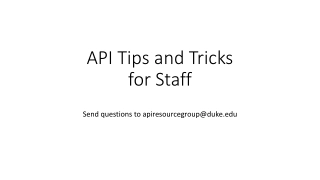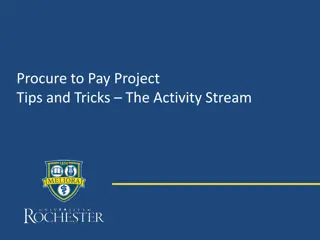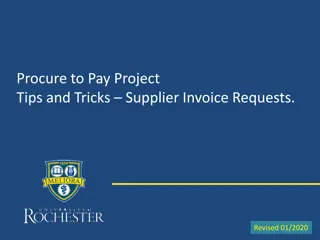HTTP Tips and Tricks
Here are some networking jokes, HTTP request types, tunneling concepts, HTTP headers explanation, and tips on buffering requests for writing a proxy server.
Download Presentation

Please find below an Image/Link to download the presentation.
The content on the website is provided AS IS for your information and personal use only. It may not be sold, licensed, or shared on other websites without obtaining consent from the author.If you encounter any issues during the download, it is possible that the publisher has removed the file from their server.
You are allowed to download the files provided on this website for personal or commercial use, subject to the condition that they are used lawfully. All files are the property of their respective owners.
The content on the website is provided AS IS for your information and personal use only. It may not be sold, licensed, or shared on other websites without obtaining consent from the author.
E N D
Presentation Transcript
CSE461 Section HTTP Tips and Tricks
First: Networking Jokesand Trivia UDP HTTP HTTP 418 The HTCPCP server is a teapot; the resulting entity body may be short and stout. There is a strong, dark, rich requirement for a protocol designed espressoly for the brewing of coffee.
HTTP Request Types GET Page, please HEAD Metadata, please POST Here s some data update what you have PUT Here s some data create a new resource CONNECT Make a tunnel for me through your proxy!
CONNECT and Tunneling CONNECT requests say, give me a tunnel! Used for communication via proxies It s a virtual connection it means forward all of the packets that I send to the destination, and vice- versa You don t have to use CONNECT with proxies But you do when HTTPS/SSL is used why?
HTTP Headers: Host Specifies the hostname (and, optionally, the port) to which to send a request Example: GET /Passport.aspx?popup=1 HTTP/1.1 Host: www.bing.com User-Agent: Mozilla/5.0 (Windows NT 6.1; WOW64; rv:34.0) Gecko/20100101 Firefox/34.0 Accept: text/html,application/xhtml+xml,application/xml;q=0. 9,*/*;q=0.8 Accept-Language: en-US,en;q=0.5
HTTP Headers: Connection Standard header for keep-alives Connection: keep-alive is sent to keep a connection alive If you don t want to keep it alive, send Connection: close We ll rewrite packets to do this for the proxy project Also used to switch from HTTP /1.1 to HTTP/2 Client sends Connection: upgrade to do this Example: GET /ajax/libs/jquery/1.7.1/jquery.min.js HTTP/1.1 Host: ajax.googleapis.com Connection: keep-alive Accept: */*
HTTP Headers: Proxy-Connection Same functionality as a Connection field in the header Actually came from a mistake made by Netscape developers; it wasn t in the standard but they used it anyway Now seen occasionally, but does the same thing as Connection
Buffering Requests When writing a proxy, you may want to buffer requests This is a good idea to keep your network traffic and thread consumption reasonable (Proxies that don t buffer often crash)
TCP Streams UDP sends a string of messages; no concept of connection TCP is like a direct pipe from one node to another No concept of message boundaries Easy to associate data with the data that preceded it Gives you guarantees that data you send will arrive
Binary Streams vs. Text Streams Important when writing code to think about if you re reading text or arbitrary binary data If you use APIs for reading text buffers to read your binary headers, you re going to have a bad time Binary bytes can be misinterpreted as text-related commands by text buffer readers and not properly received Text buffer readers may try to read in UTF-8, which formats byte strings very differently and will cause issues In Java, this means use ByteStreaminstead of Inputstream With Python, if you use socket.recv() you shouldn t have problems
Gateways General term for network nodes that bridge a boundary between networks that use different protocols Often package internet packets to travel and get routed through networks where they wouldn t normally work In Tor, your Tor nodes will act as gateways























